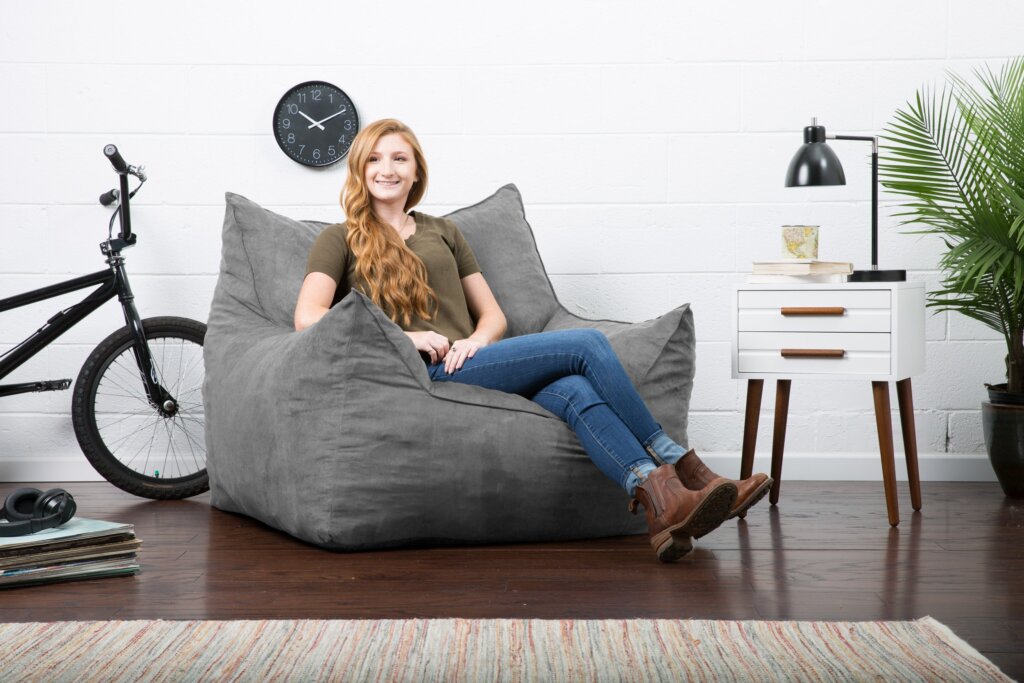Key Inventors and Contributors: Who Invented The Bean Bag Chair

While the bean bag chair’s origins are murky, several individuals and companies played pivotal roles in its evolution and popularization. The story of the bean bag chair is a testament to the power of innovation, ingenuity, and the constant search for comfort.
Who invented the bean bag chair – The bean bag chair’s journey from a simple concept to a cultural icon is intertwined with the contributions of several key players. These individuals, driven by a desire to create a comfortable and unique seating experience, navigated the challenges of design, materials, and marketing to bring this iconic piece of furniture to the world.
Early Pioneers
The concept of a bean bag chair existed long before its modern iteration. Early versions, often made with filled sacks or pillows, were found in various cultures and time periods. These primitive forms provided a comfortable and adaptable seating option, foreshadowing the evolution of the modern bean bag chair.
- The “Bean Bag” Concept: The term “bean bag” itself emerged in the 19th century, referring to small, filled bags used for games and activities. These early bean bags, often filled with beans or other small objects, provided a tactile and playful experience, laying the groundwork for the later development of bean bag chairs.
- Early Prototypes: The first recognizable prototypes of the bean bag chair appeared in the early 20th century. These early iterations often involved filling large sacks with materials like sand, sawdust, or even grain. These prototypes, while lacking the refined design and materials of later versions, demonstrated the potential of a flexible and comfortable seating option.
The Rise of Modern Bean Bag Chairs
The 1960s marked a turning point in the development of the bean bag chair. This era saw the emergence of modern designs, innovative materials, and a growing awareness of the bean bag chair’s unique appeal.
- The “Sack” Chair: In the early 1960s, Italian designer Piero Gatti designed the “Sack” chair, a revolutionary bean bag chair made of flexible vinyl filled with polystyrene beads. The “Sack” chair was a groundbreaking design, introducing a new level of comfort and flexibility to seating.
- The “Bean Bag” Chair: In the United States, furniture designer W. Edward Bean developed his own version of the bean bag chair, utilizing similar materials and principles as the “Sack” chair. Bean’s design, which was marketed under the name “Bean Bag Chair,” became a popular choice for students and young adults, contributing to the bean bag chair’s growing popularity.
Patents and Intellectual Property
The development of the bean bag chair was not without its share of intellectual property disputes. Patents and trademarks played a significant role in shaping the industry and defining the bean bag chair’s evolution.
- Early Patents: The first patents for bean bag chairs emerged in the 1960s, primarily focused on the design and construction of the chair’s outer shell and filling materials. These patents helped to establish intellectual property rights and protect the innovations of early designers.
- Trademark Disputes: The use of the term “bean bag chair” itself became a subject of trademark disputes. Several companies sought to protect their rights to the term, leading to legal battles and trademark registration efforts. These disputes highlighted the growing commercial importance of the bean bag chair and the desire to control its branding and marketing.
The Bean Bag Chair’s Cultural Impact

The bean bag chair, with its casual comfort and unconventional design, has transcended its status as a mere piece of furniture, becoming a cultural icon deeply embedded in popular culture, reflecting societal trends, and influencing design aesthetics.
Portrayal in Popular Culture
The bean bag chair’s ubiquitous presence in popular culture, from movies to television shows and literature, showcases its adaptability and enduring appeal.
- In movies, the bean bag chair often symbolizes a carefree and relaxed atmosphere, as seen in the iconic scene from the movie “Animal House” (1978), where the characters lounge in bean bag chairs during a raucous party, exemplifying the chair’s association with youthful exuberance and unconventional living.
- Television shows like “Friends” (1994-2004) frequently featured the bean bag chair in the characters’ apartments, portraying it as a staple of casual living and a gathering spot for friends, highlighting its role in fostering social interaction and intimacy.
- In literature, authors often use the bean bag chair as a symbol of comfort, relaxation, and introspection, as in the novel “The Catcher in the Rye” (1951) by J.D. Salinger, where the protagonist, Holden Caulfield, spends time in a bean bag chair, reflecting on his experiences and grappling with his emotions, emphasizing the chair’s association with contemplation and personal reflection.
Social and Cultural Significance, Who invented the bean bag chair
The bean bag chair’s cultural significance extends beyond its appearances in popular media, as it reflects societal values and trends across different contexts.
- In home decor, the bean bag chair has transitioned from a symbol of youth and rebellion to a versatile and adaptable piece of furniture that complements various design aesthetics, ranging from minimalist to bohemian, demonstrating its ability to blend seamlessly with diverse interior design styles.
- In student life, the bean bag chair has become synonymous with comfort and informality, serving as a popular choice for studying, relaxing, and socializing in dorm rooms and student lounges, reflecting its association with casual learning environments and youthful culture.
- In the gaming world, the bean bag chair has emerged as a preferred seating option for gamers, offering comfort and support during extended gaming sessions, underscoring its adaptability to specific activities and its role in enhancing the gaming experience.
Influence on Furniture Design
The bean bag chair’s unique design has had a profound impact on furniture design, influencing the development of new seating options that prioritize comfort and flexibility.
- The bean bag chair’s emphasis on comfort and adaptability has inspired the creation of innovative seating solutions like ergonomic chairs, beanbag-style ottomans, and modular furniture that can be easily rearranged to suit different needs and preferences.
- The bean bag chair’s informal and casual aesthetic has influenced the design of contemporary furniture, blurring the lines between traditional and unconventional seating options, encouraging a more relaxed and comfortable approach to home furnishings.
- The bean bag chair’s adaptability to different spaces and activities has inspired the development of versatile furniture pieces that can be used in multiple settings, such as living rooms, bedrooms, and outdoor spaces, highlighting the chair’s role in promoting a more flexible and adaptable approach to furniture design.
The bean bag chair, a seemingly simple invention, was actually the brainchild of Italian designer, Piero Gilardi, in the 1960s. His creation, initially intended as an avant-garde piece of furniture, quickly gained popularity for its comfort and versatility. This comfort extends to the younger generation, as seen in the wide range of toddler bean bag chairs available in the UK , offering a safe and cozy seating option for children.
While the origins of the bean bag chair may lie in artistic expression, its impact on everyday life, including the comfort it provides for children, is undeniable.
While the exact origins of the bean bag chair are debated, the popular design we know today is often attributed to Italian designer, Piero Gilardi, who created his iconic “Sacco” in the 1960s. Today, this comfort-driven furniture has evolved, offering modern variations like the ultimate sack 4000 bean bag chair , which boasts luxurious features and a focus on personalized relaxation.
Regardless of the specific design, the bean bag chair’s enduring popularity speaks to its ability to provide a unique and comfortable seating experience.
